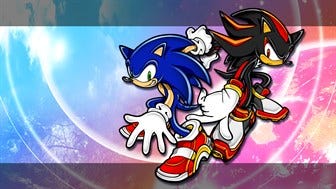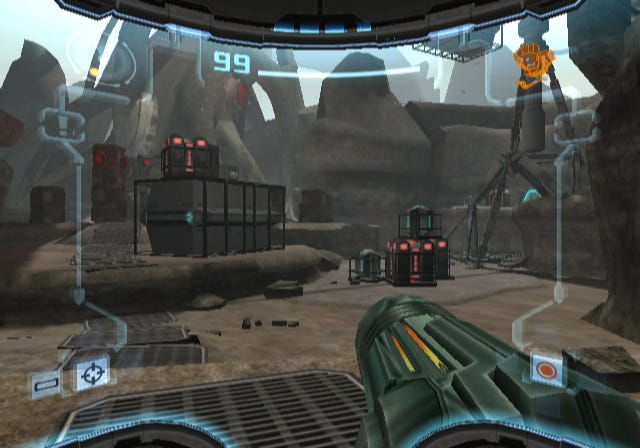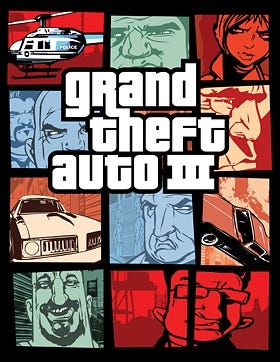Catch Up on the Series
1 - Pressing Start / 2 - The New Industry / 3 - Have You Played Atari Today?
4 - The Great Video Game Crash of 1983 / 5 - Leave Luck to Heaven
6 - Now You’re Playing With Power / 7 - 8-Bit Magic
8 - Let’s Make Lots of Money / 9 - War Drums / 10 - Nintendo vs. Sega
11 - The Revolution Will Be Televised / 12 - The Dawn of a New Era
13 - Gotta Catch 'Em All! / 14 - Dreaming Big
A Tragic Start
At the start of the new Millennium and decade, I was entering Middle School and found myself confused about how I felt about gaming. This was the time when my brother started losing interest in gaming, while I couldn’t get enough. I was still a diehard Nintendo fan, and the hype I had for the GameCube was immense. However, I will admit that many of the friends I had around me were more interested in PS2, and buzz was starting to show up for Microsoft’s new hardware - the Xbox. I remember following E3 2001, the first E3 I truly followed, by getting my hands on all the game magazines and internet forums that covered it. That would’nt matter in the morning of Tuesday, September 11.
I was at my locker when a school friend approached me and told me a plane had hit the World Trade Center. Admittedly, I had no idea what the Twin Towers were; I only knew about the Empire State Building when bringing up the New York City skyline. I was confused about what was going on until I entered my Science class, where my teacher had it on TV and gave a brief speech to calm the students' nerves. She also mentioned not to spread rumors that the President had been killed. I remember thinking immediately, “Wait, what? The president killed?" It was the footage of the second plane hitting that changed it. I was starting to get interested in history, and I knew about Pearl Harbor obviously, but seeing that second plane hit brought those events to my mind immediately. We all know the events that followed, an event many in my generation will never forget. Despite my criticism in the future of the Bush presidency, the President did calm my fears during his speech that night to the nation. I remember my mom putting me to bed and telling me that it would be okay, and praying with us. From there, my more “history nerd” side would be born, because I do believe history can teach us about the now.
This was NOT a good way for the new millennium to start. Little did I know that in the game industry, it would be the golden age of the gaming console, and many concepts would change forever. There were more history-sized events on the way, and video games would sit right alongside them, helping us with escapism when it got real bad.

Sega Waves the White Flag
Sega launched the Dreamcast with one of the most iconic launches in history. To this day, we still talk about the 9/9/99 marketing campaign. After a solid start and hype that blended with the MTV Generation of teenagers, it all began to fade quickly. Sony’s reveal of the PS2 made it apparent that Sony’s PlayStation brand had become a juggernaut, and similar to Apple products or Starbucks today, it would become the “it” brand. The hype surrounding the PS2, coupled with the announcements from Nintendo and Microsoft regarding their hardware, created a barrier for Sega to sell its console. The Dreamcast was indeed the start of a new much more powerful generation, but the new system would quickly pass it in power. Remember, this is happening when console power was still the leading marketing gimmick that companies had. It didn’t help that DVDs were taking over households and replacing VHS, and now PS2 and Xbox would be able to play them as well? But that wasn’t the only reason Sega had issues.
Sega was not an electronics or tech company; they were just a video game company, similar to Nintendo. However, Nintendo had been smarter financially and even with N64 seeing a sales decline compared to the Super Nintendo, their Game Boy line, Pokémon, merchandise, and software sales made up for it. Sega, meanwhile, was bleeding; the Saturn was expensive to make, and they ditched it for the Dreamcast. Just as Stollar predicted, the Dreamcast's decision to choose a $199 launch price over $249 would result in it losing money quickly. Sega also made several blunders that would lead to no support from Electronic Arts and side eye from many third parties that didn’t trust the company anymore. The monthly sales began to weaken, and the writing on the wall started to become apparent. At the start of 2001, Sega announced it would no longer manufacture game consoles. A collective gasp from the industry marked the end of a once-powerful console brand. Sega had waved the white flag.
Sega wasn’t going to sit back, however; they would still make video games, they weren’t going to compete for a place under your TV. In one of the more surprising moments in the industry’s history, Sonic would launch a game on Nintendo’s new GameCube console, Sonic Adventure 2: Battle. I still remember my mom getting it for me as a birthday present and I was playing freaking Sonic on a Nintendo system! Younger gamers these days have no idea how crazy that is, although some of the recent moves by Xbox are probably the closest they’ll come to understanding how it felt. Sega would have a solid decade, with games across multiple consoles, earning critical acclaim. The Sonic franchise experienced a challenging period starting in the mid-to-late 2000s, but it eventually produced some more tolerable games. The character is so strong that he inspired a movie series, which started a trend of respectable to well-done video game adaptations.

GameCube and Pokémon Struggles
The Nintendo GameCube was the first video game system that I was truly hyped for from the jump. I remember scanning magazines and the internet for anything Nintendo Dolphin-related back when it was just a code name. E3 2001 just made the hype meter break, and I was desperately hoping my parents got it for me on Christmas. Well, despite my mother making it clear she tried but couldn’t get it, she did, and it’s still one of my favorite Christmas memories to this day. I loved everything about it, including the Memory Cards, the small game discs, the cube-shaped system, and the graphics, which looked insane to my pre-teen eyes. I got Luigi’s Mansion, a game that I appreciate more as an adult with time passing. Later, I would get Super Smash Bros. Melee, the start of many long weekends with friends. This was the system where my first experience with Nintendo franchises beyond Mario began.
Of course, we know now that the Nintendo GameCube would be a stumble for the company. The system had an identity crisis from the get-go. It had a Jet Black color option, but was advertised in the Indigo purple variant. I remember in Middle School being told that GameCube looked “gay” due to its color (for those young enough, yes, during that time anything uncool was called gay, obviously, ages really bad today). Nintendo initially attempted to release more hardcore and mature games, but later shifted its focus to catering to kids in the second half of the system’s life. It never gained an identity to stick with, and was seen by many teenagers and young adult males (a vital part of the video game consumer base back then) as the “kids’ console.” A lot of this we can laugh at today, especially as older Millennials have embraced their fandoms for more “kid-friendly” things like Disney, but it was a bad identity to have at the time. In the end, Nintendo sold over 22 million units, coming in third, while newcomer Xbox sold over 24 million units, despite jumping to next-gen early.
It didn’t help that the mega juggernaut that was Pokémon was struggling as well. After launching the second generation to start the millennium, Pokémon launched its third generation on Nintendo’s new handheld system, the Game Boy Advance. However, the peak of Pokémon had passed, and sales reflected it. It still got relatively strong revenue and critical acclaim, but those Pokémon fever days at the end of the 90s were over. Even the card game experienced problems, with Nintendo taking the game away from Wizards of the Coast in the West and overprinting booster boxes, which led to many of that era’s cards being relatively inexpensive before they gained more appreciation in the future. Eventually, Pokémon would make a gradual comeback to reach new popular heights, but the decade wasn’t a walk in the park for the franchise.
It wasn’t all bad for Nintendo during this period. Today, many gamers now look back on the GameCube fondly, and it has had a major legacy comeback. The system may have disappointed in sales, but it has some solid and essential titles. Games such as Metroid Prime, Super Smash Bros. Melee, Pikmin, Luigi’s Mansion, Super Mario Sunshine, Viewtiful Joe, Final Fantasy Crystal Chronicles, Soul Calibur II (with an appearance from Link!), The Legend of Zelda: The Wind Waker, and so much more. Towards the end, however, Nintendo was losing confidence in its ability to compete against two corporate conglomerates as the HD era began to take hold. It was time to change, but not pull a Sega at the same time.

Grand Theft Auto and the Golden Age of PS2
Grand Theft Auto and its sequel were games that did okay, and weren’t going to go down in video game history. So when development for its third entry started, the team wanted to go bigger. Leslie Benzies, Dan Houser, and Sam Houser got to work on making a 3D open-world title. Using the codename Godzilla, the game began development as a Sega Dreamcast title. However, the team changed its plans after they realized the system wasn’t doing so great and shifted to PlayStation 2. It was pitched as an Xbox exclusive to Microsoft, but they turned it down. On October 23, 2001, Grand Theft Auto III was released to the North American market. It received universal acclaim and quickly became one of the must own PS2 titles.
The game has you play as Claude, a criminal who overcomes betrayal and navigates the world of crime to get his revenge. Players were playing with a morally dark character, which was different from what most stories were being told. The open world aspect and freedom meant you could pick up sex workers, run over people, steal cars (it is in the name after all), and controversially, you could shoot at cops. Just like Mortal Kombat, the Grand Theft Auto series would be the new boogeyman for many older politicians and social morality groups to attack. But in the end, despite all the controversies and lawsuits, nothing stuck and the series was off and running. We would visit the Miami-inspired Vice City and the LA-inspired San Andreas in two more entries, each one eventually coming to Microsoft’s Xbox, but mostly being seen as PS2 titles.
PlayStation 2’s image with the GTA games was only a small piece of the console’s golden age. Just as the Super Nintendo represented the prime years of the pixel era, PS2 was seen as the prime years of the new 3D era. Along with GTA, Sony had a bountiful amount of games that were all critical and sales darlings. If it wasn’t an exclusive game, it was most certainly on the PS2 at the very least. They even got lucky as Square teamed up with Disney for one of the greatest crossovers of all time in Kingdom Hearts. The Madden franchise was at its peak and was also closely associated with the PS2. The exclusives kept coming, and owners of the system knew they were experiencing something special. As the millennium began, Sony was at its peak, but no one is perfect.
Xbox is Live
Online multiplayer gaming was a new concept in the console world when Microsoft announced its Xbox Live service. Yes, we did have Sega experiment with it and launch a full-blown service as Sega Net, but it was still a niche offering compared to PC gaming, which was starting to feature LAN parties and such. Microsoft took a risk here, and they had to invest heavily to give people a reason to game online against strangers rather than just their friends. In many ways, you can argue Xbox Live was an early version of social media since you did interact with so many strangers to begin with.
Microsoft’s Xbox was getting traction thanks to a steady catalog of Western-developed titles. Japanese games had dominated the console industry for so long that Microsoft helped major games, which would have been played on a PC audience, make the jump to console gaming. It helped that the console was essentially a gaming computer. Halo was a massive launch success for the system, and Sega had backed the system pretty hard. The result was that Xbox would take the spot of Sega and become part of the “big three,” which still exists to this day. Microsoft also scored a significant win when it acquired Rare from Nintendo, gaining access to a vast catalog of franchises and talented developers. However, it was Xbox Live that took the brand to the next level.
Xbox Live kicked off in November 2002 and hasn’t looked back since. The service would eventually expand throughout the brand’s history, and Sony and Nintendo would be compelled to develop their own online services in response. Halo 2 launched in 2004, a year that saw Xbox truly shine and give a preview of its soon-to-come successor’s North American dominance in the market. Everyone who had an Xbox wanted to play Halo 2 online multiplayer, so much so that when Xbox shut the servers down, a dedicated group of fans spent a long time keeping it up by refusing to log off. The Halo series, the investment in trying out new ideas, and Xbox Live put the green brand on the map, and they would be the most crucial player in the upcoming leap to HD graphics.
A New Sheriff in the Big N
As this generation came to a close, Sony was smiling as their PlayStation 2 system would become the best-selling dedicated video game console of all time, reaching over 155 million units sold (5 million more if you believe Sony’s random adjustment recently). Microsoft took a gamble with Xbox, and while they only made money at the end of 2004, it was paying off, and they had established a strong video game platform. Nintendo, however, had a rough generation when it came to home consoles, with their handheld Game Boy Advance being the bright spot in quarterly sales. However, things were about to change significantly for the house that Mario built. The long-time Yakuza-like boss, Hironobu Yamauchi, had shocked everyone by announcing his retirement. Instead, a much different style was going to take his place.
Satoru Iwata, a long-time employee of HAL and a recent Nintendo corporate hire, had been picked as his successor. Iwata planned to focus on what made Nintendo its most successful, great Nintendo games. Instead of power, he would concentrate on delivering exclusive experiences built around Nintendo franchises, even if Western third parties weren’t crazy about it. He would take one hell of a gamble with the Nintendo DS as the successor to the Game Boy line. Then, he took an even bigger gamble with an underpowered system that would focus on a new way to play, rather than making the jump to HD Graphics. On paper, it sounds like a horrible idea. Yet, it would go on to work and change the company’s trajectory forever.
SOURCES
Wikipedia (Xbox / GameCube / PS2 / Sega / Dreamcast / GTA 3)
Be Nice to All






